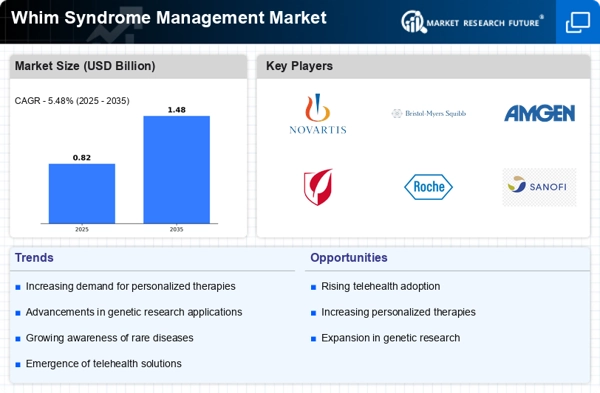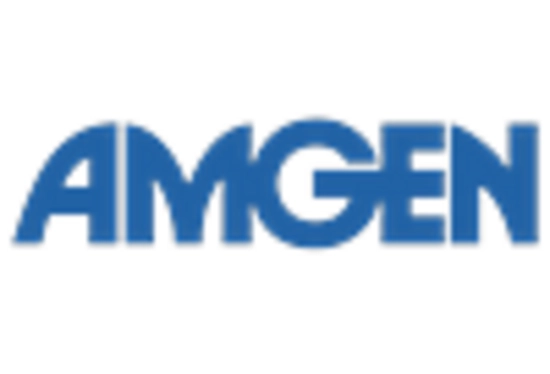Advancements in Genetic Research
Innovations in genetic research are significantly influencing the Whim Syndrome Management Market. The identification of specific genetic mutations associated with Whim Syndrome has opened new avenues for targeted therapies and personalized medicine. As research progresses, the potential for gene therapy and other advanced treatment modalities becomes more feasible. This shift towards precision medicine is likely to enhance treatment efficacy and patient outcomes, thereby driving market growth. Moreover, the increasing availability of genetic testing allows for earlier diagnosis and intervention, which is crucial for managing the symptoms of Whim Syndrome. The integration of genetic insights into clinical practice not only improves patient care but also fosters collaboration among researchers, healthcare providers, and pharmaceutical companies, further propelling the Whim Syndrome Management Market forward.
Increased Awareness and Advocacy
The growing awareness and advocacy surrounding Whim Syndrome are crucial drivers for the Whim Syndrome Management Market. Patient advocacy groups and healthcare organizations are actively working to educate both the public and medical professionals about this rare disorder. This heightened awareness is likely to lead to earlier diagnosis and improved management of the condition. Additionally, advocacy efforts are fostering a supportive community for patients and families, which can enhance treatment adherence and overall quality of life. As more individuals become informed about Whim Syndrome, the demand for specialized care and management solutions is expected to rise. This trend not only benefits patients but also stimulates the Whim Syndrome Management Market by creating a more informed patient base that actively seeks out effective treatment options.
Rising Prevalence of Whim Syndrome
The increasing incidence of Whim Syndrome is a pivotal driver for the Whim Syndrome Management Market. As awareness of this rare immunodeficiency disorder grows, more patients are being diagnosed, leading to a heightened demand for effective management strategies. Recent estimates suggest that the prevalence of Whim Syndrome may be underreported, with actual cases potentially exceeding previous projections. This rise in diagnosed cases necessitates the development of specialized treatment protocols and management plans, thereby expanding the market for therapeutic interventions. Furthermore, as healthcare providers become more knowledgeable about the condition, the likelihood of early diagnosis increases, which could further stimulate market growth. The Whim Syndrome Management Market is thus positioned to benefit from this trend, as healthcare systems adapt to meet the needs of an expanding patient population.
Growing Investment in Rare Disease Research
The surge in investment directed towards rare disease research is a significant catalyst for the Whim Syndrome Management Market. Governments and private entities are increasingly recognizing the need to address the challenges posed by rare conditions, including Whim Syndrome. Funding initiatives aimed at fostering research and development are likely to yield new therapeutic options and management strategies. For instance, recent funding allocations have focused on understanding the pathophysiology of rare diseases, which could lead to breakthroughs in treatment. This financial support not only accelerates the pace of research but also encourages collaboration among stakeholders, including academic institutions and biotechnology firms. As a result, the Whim Syndrome Management Market stands to benefit from enhanced innovation and the introduction of novel therapies that address unmet medical needs.
Regulatory Support for Innovative Therapies
Regulatory bodies are increasingly providing support for the development of innovative therapies targeting rare diseases, including Whim Syndrome. This regulatory environment is conducive to the growth of the Whim Syndrome Management Market, as it encourages pharmaceutical companies to invest in research and development. Streamlined approval processes and incentives for orphan drug designation are likely to expedite the introduction of new treatments. Furthermore, regulatory agencies are recognizing the importance of patient-centric approaches, which may lead to the development of therapies that are more aligned with patient needs. As a result, the Whim Syndrome Management Market is poised to benefit from a favorable regulatory landscape that promotes innovation and enhances access to effective management solutions for patients.


















Leave a Comment